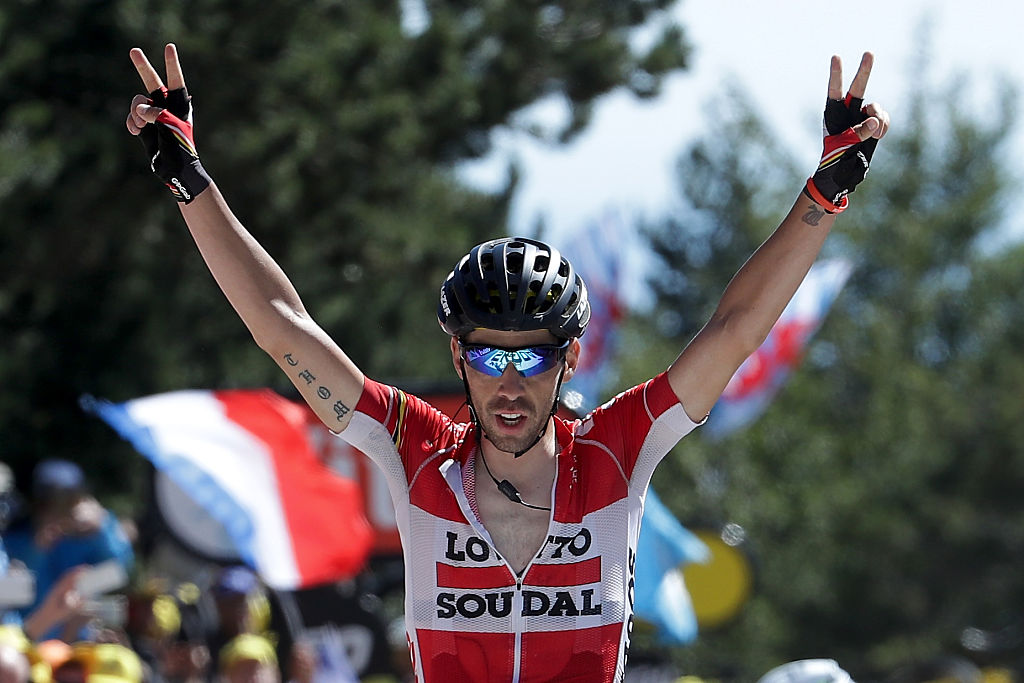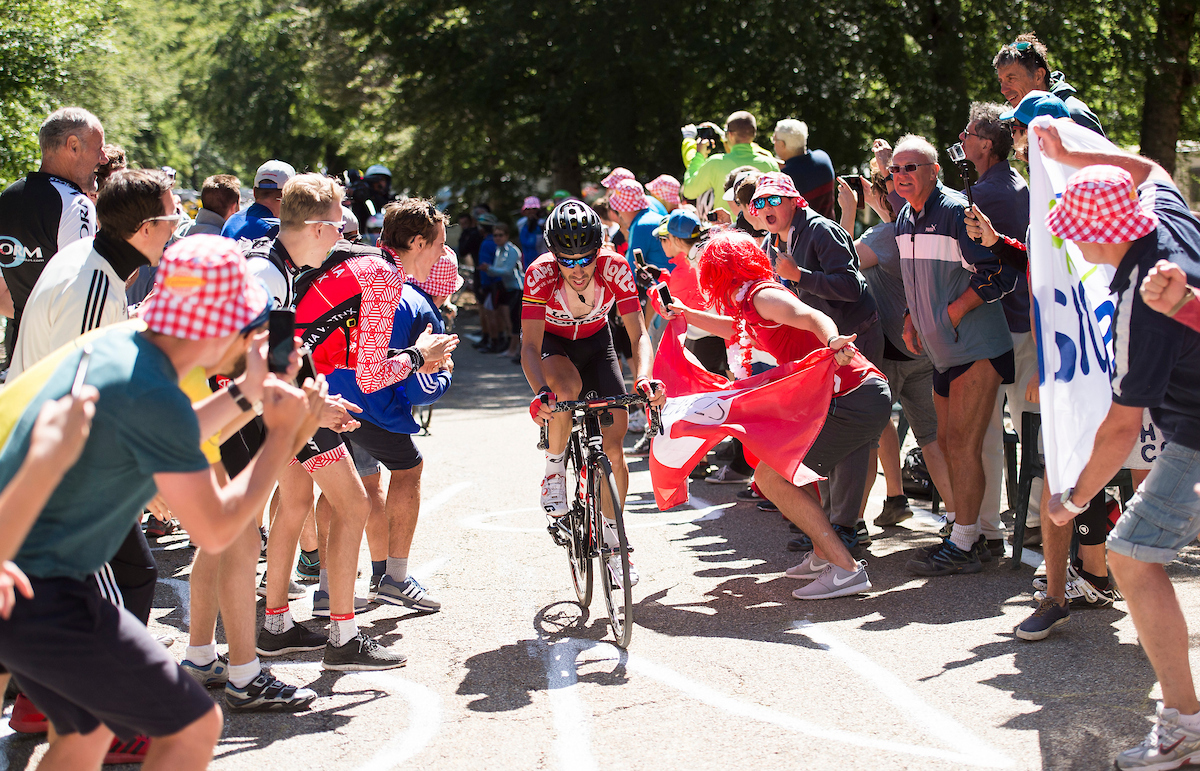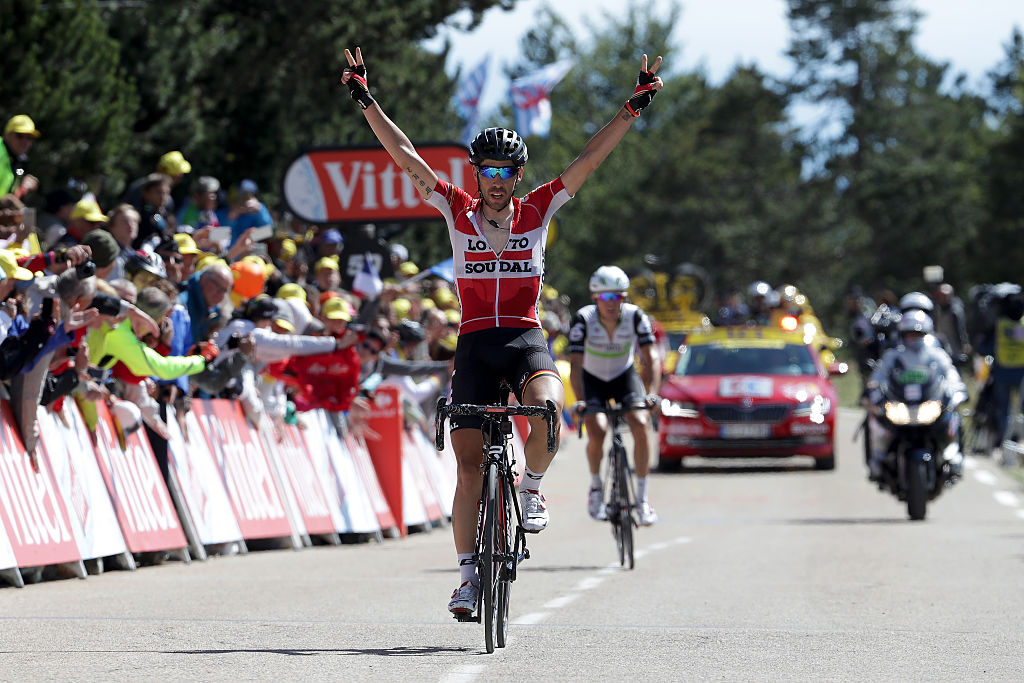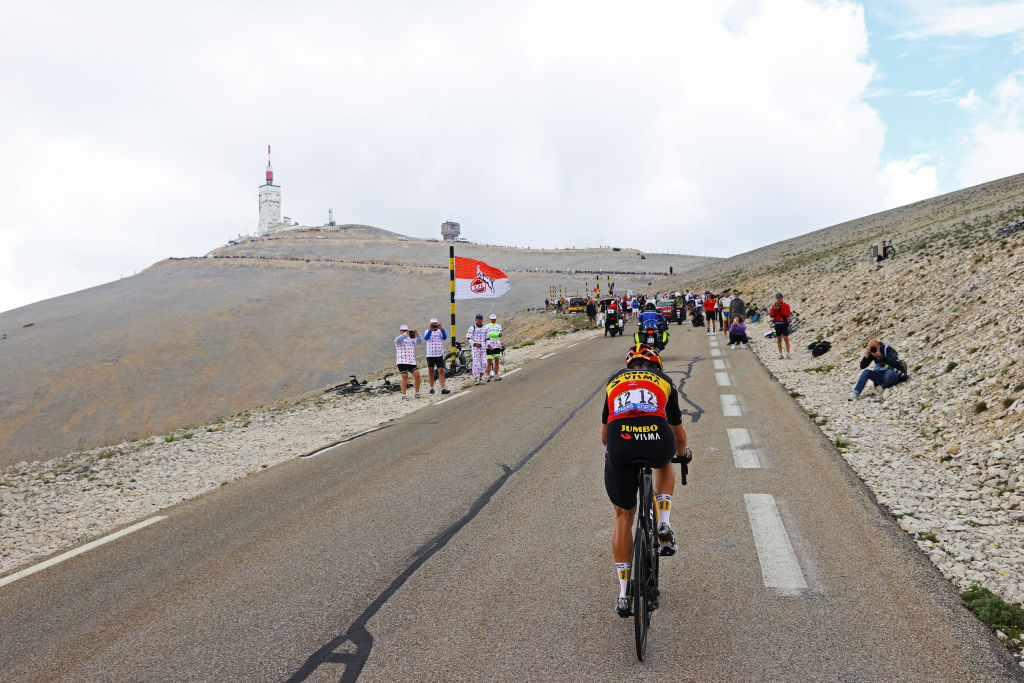'Is that it?' - A Tour de France stage winner on the Mont Ventoux, Thomas De Gendt explains why it's the one victory of his career he sometimes forgets
In his latest column, De Gendt looks back on a stage when Chris Froome had to run up the Ventoux to stay in the yellow jersey, how he sprinted for victory even though he wasn't 100% sure he was at the finish, and the best tactics for racing it today

Of all the wins in my career, I'd say my victory in the 2012 Giro d'Italia on the Stelvio was the most beautiful and the one I had in Saint-Étienne in the 2019 Tour de France had the best plot-line to it.
And the one on the Ventoux in the 2016 Tour? That was the most confusing.
The reason why was the way they changed the stage finish, bringing it down from the Ventoux summit because of high winds, to two-thirds of the way up at the Chalet Reynard. We all knew before the stage that it was going to end there, but I hadn't done the climb that often and I had no idea where the kilometre signs for the climb were located on the roadsides. So I was not at all familiar with where Chalet Reynard actually was!
To make matters more difficult for me, the Ventoux roadsides were absolutely jammed with the public, because nearly all of the people originally standing in the final six kilometres were moved down to the last three kilometres before the new finish location.
Yet another reason for me having no idea where I was is that usually on the mountain stages the last few kilometres are barriered off, but this time the barriers didn't start until about 500 metres to go. And on top of that, I didn't have my radio connected.
So for the last four or five kilometres, I was actually riding blind. Then suddenly the fences were there, and I saw a sign saying '500 metres to go' and it was a big surprise.
Even then, I wasn't completely convinced the signs were correct: it was only when I saw the finish line itself that I knew for sure. So when I won, it didn't feel like a win, it was more like - OK, is this it?
The latest race content, interviews, features, reviews and expert buying guides, direct to your inbox!
It was all really strange. None of the build-up to the finale like you should have, so the climax wasn't there at all. I don't think the reduction in the mountain's length changed the race outcome much, as the first part of the Ventoux is the hardest. It certainly made it a bit safer. But either way, I didn't know where Chalet Reynard and the finish were!
The crowds were also so big that at some points you almost couldn't move. The police were only controlling the fans a little bit, so it still felt like it was out of control. It was a bit like the Dutch corner on Alpe d'Huez, just too many people in a reduced space.

Of course, this affected the stage, because the motorbike ahead of us was creating space for just one rider wide, pushing through the crowd, but you couldn't get past the others. By the end of the break there were just three of us ahead, me, Serge Pauwels and Dani Navarro, and we were lucky because our motorbikes were quite a way in front, so it made for a little bit more space.
But with [race leader] Chris Froome in the yellow jersey group, the problem was the motorbike ahead of him was too close, it got stuck in the crowd. The motorbike braked but the first rider following behind couldn't hear it when it did, and that's why they crashed into the motorbike and Chris ended running up the mountain with his bike.
As for me in the break, at one point I lost contact because I was riding at my own speed, the guys ahead were attacking and I thought - if I try to follow them, I'll blow. I was riding 400 watts for 30 minutes, that's what I usually push, maybe sometimes a bit over, but they were going way over, Pauwels was killing Navarro. So I figured, OK, they are stronger right now, but it's still a nice win for one of them and a nice third place for me.
However, as things turned out, they were killing each other so much they had to settle for a lower pace and I could come back to them about four or five kilometres later. I was always 100 to 150 metres behind them so I was never really far away, I think the biggest gap I had behind them was 15 seconds. Once they settled for a lower pace I was on their wheel quite easily.
Then I tried one attack to see if they were on the limit or just taking things at a slower pace. That meant Navarro was dropped and Pauwels was at 10 metres behind for about one kilometre until he came back to me. But then I got away in the finish and won.
I also remember I dedicated the victory to Stig Broeckx. He was a teammate at that time and he'd had a horrible crash in the Tour of Belgium, and was still in a coma at that time fighting for his life. We wanted to dedicate every victory to him, so this one went to him, too.
The Ventoux and the man with the hammer

As for the climb itself, the first 10 kilometres are in a forest, so you never really see the top. It's also the steepest segment of the hole climb. So my key tip to anybody riding the Ventoux for the first time is - don't start too fast.
It's easy to overestimate your strength, because once you are out of the forest and its protection, usually on this climb it's very windy and usually it's a headwind. If the wind is in your face, then it's in your face all the way, and normally - it's just relentless.
Those conditions mean that you can see the 'man with the hammer' quite a few times on a climb like this. If you start too fast then you see him in the forest and if you can recover then you see can him up beyond Chalet Reynard, in the wind.
It's a really strange climb. If you're lucky and it's not windy then it's pretty normal and it's not overly long: one hour's climbing or so, or 80 minutes for 'normal tempo' people. But if there's even a little bit of wind, then it can take a really long time to get to the top.
There's also not much to see, apart from the view a little bit, but basically all you can see after the forest are rocks and more rocks. The good thing about being in the forest lower down is it protects you a bit from the sun, and once you're out of it, then you're at a higher altitude, so potential 30-degree temperatures are not as bad any more. But if it's really hot and windy and there's still 6.5 kilometres from Chalet Reynard to go, that's almost 25 minutes of climbing, so a lot can still happen.
It so happens, I know the Ventoux at both extremes. I won there in 2016, but in 2021, the day Wout van Aert won, I had one of my worst days on the bike ever: that day climb was endless, really endless. And we had to do it twice.

The thing was I got heatstroke, I think. A lot of riders had the same problem. It was the first hot day of the race that year and some riders were vomiting already on the climb that came before the Ventoux. I had the same, really strange, feeling, it was like I was getting sick and I only pushed 230 watts, just to get over the climb.
The doctor said later it was probably heat stroke because I was close to having a fever after the stage, but then after that I was not feeling sick any more, so it wasn't a virus. Either way, if you have to climb the Mont Ventoux twice, it was not the best day to get whatever I had.. .
The Ventoux is definitely one of the hardest climbs in France, but there are longer climbs, there are steeper ones, so it's not, I'd say, in the top 10. Looking across Europe in general, others like the Stelvio and Gavia are harder and the Zoncolan and Alpe d'Huez(which is in France, of course), are much steeper.
The Stelvio, in particular, is a completely different kind of climb. There's its altitude, which goes up to 2,757 metres, so in the last few kilometres you feel sick because of the low oxygen levels. So it's a different kind of suffering, it's not that steep, it's just the altitude seriously messing with your brain and your muscles.
So to go back to the Ventoux and 2016, to be honest, the day I won I was expecting more of the climb, and suddenly I was there with the win in my pocket, and even in the car on the way back to the hotel, it didn't sit right, somehow. The race wasn't complete, it felt strange.
What with Froome running up the hill and the terrorist attack later on in Nice (that evening), and how the day went in general, it didn't feel like a win for a long time.
And now? Now, OK, it feels like a win, but it still feels like something was missing, so it remains a very confusing win. It's on the palmares and usually I remember all my victories. But this one, I often forget. Yet somehow, it's still there.
The Tour de France is the biggest race in cycling, and a Cyclingnews subscription offers you unlimited access to our unrivalled coverage. Get all the breaking news and analysis from our team on the ground in France, plus the latest pro tech, live race reports, and a daily subscriber-only newsletter with exclusive insight into the action. Find out more.
You must confirm your public display name before commenting
Please logout and then login again, you will then be prompted to enter your display name.
